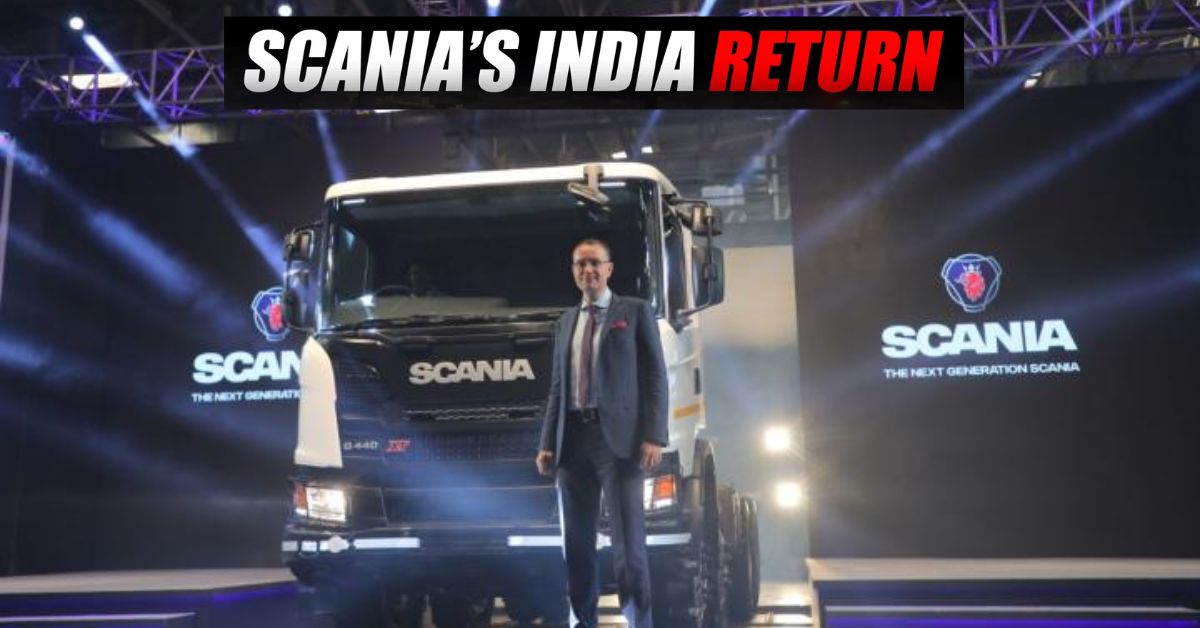Scania is drafting a bold revival strategy for India, aiming to re-enter the commercial vehicle space with a new generation of trucks tailored to local needs, fuel diversity, and low ownership costs. After years of near-silence, the Swedish giant is ready to roar back.
Seven years after halting its bus body production in India, Scania is preparing a strategic comeback. The company, part of the Traton Group (formerly Volkswagen Truck & Bus AG), has cleared a global board-level plan to rebuild its Indian operations. This blueprint focuses on introducing new products, leveraging alternative fuels, and optimizing total cost of ownership—key factors in India’s competitive and price-sensitive truck market.
🚛 Why Scania Left—and Why It’s Returning
Scania’s exit from visible operations in India coincided with MAN Trucks’ departure in 2018. Both brands struggled to gain traction in a market dominated by Tata Motors, Ashok Leyland, and Mahindra. While MAN exited completely, Scania maintained a minimal presence, focusing on mining trucks and niche segments.
Now, under the leadership of Silvio Munhoz, Managing Director of Scania India Commercial Vehicles, the company is ready to re-engage. Munhoz emphasizes that the past is behind them: “We have a strong commitment from the global board to rebuild our India business with new technologies and products,” he said.
🧭 The Blueprint: Fuel Diversity and Cost Efficiency
Scania’s revival strategy hinges on two pillars:
- Fuel Flexibility: Scania plans to offer trucks powered by a wide range of fuels—diesel, LNG, CNG, biofuels, and electric. This aligns with India’s push for cleaner transport and gives fleet operators options based on regional infrastructure and cost dynamics.
- Low Total Cost of Ownership (TCO): Scania aims to deliver vehicles that offer superior fuel efficiency, longer service intervals, and reduced maintenance costs. This is crucial in India, where upfront price is only part of the equation—operating costs often determine long-term viability.
By focusing on these areas, Scania hopes to differentiate itself from competitors and appeal to fleet owners looking for sustainable, cost-effective solutions.
🏗️ Local Manufacturing and Partnerships
Scania is expected to ramp up local assembly and component sourcing to meet regulatory requirements and reduce costs. While details are still emerging, the company may revive its Narasapura plant near Bengaluru, which previously handled bus and truck production.
Strategic partnerships with Indian suppliers and logistics firms are also on the table. These collaborations could help Scania scale quickly and adapt to local market nuances.
🌍 Global Expertise Meets Local Insight
Scania’s global experience in heavy-duty trucks, mining vehicles, and sustainable transport gives it a technological edge. The challenge lies in adapting these strengths to India’s unique conditions—poor road infrastructure, fragmented logistics, and intense price competition.
Munhoz believes Scania is up to the task. “We’re not just bringing global products—we’re building solutions for India,” he said. This includes tailoring vehicle configurations, service packages, and financing options to suit Indian customers.
📈 Market Potential and Challenges
India’s commercial vehicle market is poised for growth, driven by infrastructure development, e-commerce logistics, and government incentives for cleaner transport. However, it remains fiercely competitive and cost-sensitive.
Scania’s success will depend on its ability to:
- Offer compelling value propositions
- Build a robust service and parts network
- Educate customers on TCO benefits
- Navigate regulatory and policy shifts
If executed well, Scania could carve out a niche in premium trucking and sustainable logistics.
🔮 What’s Next?
Scania’s blueprint is still in its early stages, but the intent is clear: a full-fledged re-entry with a portfolio of trucks designed for Indian roads, fuels, and business models. The company is expected to unveil its new product lineup and operational roadmap in 2026.
This comeback could reshape India’s truck landscape, introducing global standards in safety, efficiency, and sustainability. For fleet operators, it offers a new alternative. For the industry, it signals that India remains a vital market for global players.
